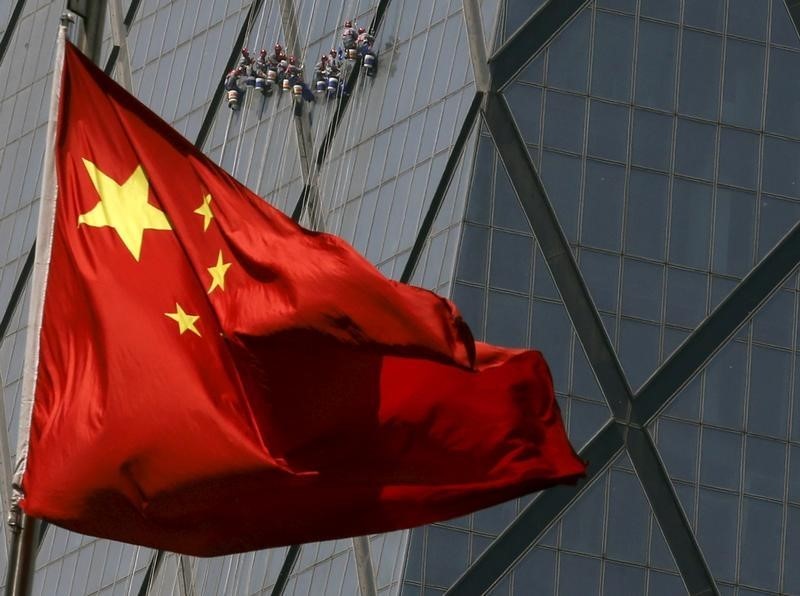(Bloomberg) -- Chinese policy makers have signaled more stimulus measures are coming to support the economy, raising the perennial question of which selection of tools best does that job while keeping debt under control.
A reduction in the amount of cash that banks have to hold in reserve and more government debt sales are in the easing pipeline after three consecutive meetings of top economic officials in Beijing this week. Some in financial markets also expect a cut in the interest rate on the central bank’s medium-term loans.
Authorities would need to be very careful in choosing which stimulus tool to use, as they grapple with a large debt stockpile that’s still growing and a currency at its lowest level in more than a decade. The optimal combination would ideally drive demand while adding little fuel to financial risks.
“We still see limited room for policy easing, as Beijing must balance short-term growth stability against long-term financial safety when launching the current round of policy easing,” Lu Ting, chief China economist at Nomura International Ltd., wrote in a note.
Here’s a recap of China’s main stimulus measures this year and how they’ve worked:
Reserve Ratios
Reserve Ratios
Reserve Ratios
Reserve Ratios
The People’s Bank of China cut banks’ reserve ratios twice this year, unleashing cash to help banks lend more. The cut in early January, which reduced the reserve ratio for all banks by 1 percentage point, had an immediate effect in boosting credit -- banks’ aggregate financing increased by 8.2 trillion yuan ($1.15 trillion) in the first three months, according to the central bank.
Rates
Now as policy makers signal another broad cut to the reserve ratio, Nomura International Ltd warned markets to be conservative in estimating the potential of such a move this time. That’s because current curbs on financing rules for the property sector and the anti-pollution campaign have meant softer overall demand for credit.
Tax Cuts
The PBOC has refrained from cutting the benchmark rate or the rates for its market liquidity tools in recent years. Instead, it initiated a long-awaited revamp of the country’s interest rate framework last month, a move aimed at pushing down the cost of borrowing by households and companies without fueling bubbles in housing market.
The new reference rate, called the loan prime rate, stood at 4.25% in August in its first release, a small step lower from the previous benchmark. Some analysts expect the PBOC to cut the interest rate on medium-term lending facility this month in step with the Federal Reserve, which could in turn push the loan prime rate lower.
Special Bonds
The government has pledged to cut taxes for businesses and households by about two trillion yuan this year in what they described as the largest ever fiscal stimulus plan in the country. The move has had an effect -- swelling the fiscal deficit to 1.2 trillion yuan in the first seven months of 2019, according to Bloomberg calculation based on official data, comparing to a shortfall of 374.5 billion yuan in the same period last year. However, the tax cuts hasn’t been able to lift business investment.
Yuan?
Local governments are allowed to sell 2.15 trillion yuan of so-called special bonds in 2019 to raise funding for infrastructure projects. The issuance has been rapid, and all the debt is to be sold by the end of September. However the money hasn’t led to a significant revival in infrastructure investment growth yet. That’s partly because a majority of the debt was used to buy land and for shanty-town renovation, according to UBS Group AG, which has less of a multiplier effect than spending on building railways and airports.
While the PBOC repeatedly said it wouldn’t use the yuan as a tool in the trade war, it has argued that the exchange rate could be a “stabilizer” in the economy as a weaker currency may help absorb some external shocks.
Markets had “looked at the yuan’s exchange rate for the next possible channel of easing amid the trade war,” as China refrained from using traditional easing tools in recent months, Tommy Xie, economist at Oversea-Chinese Banking Corp. Bank in Singapore wrote in a note.
If conventional monetary easing and fiscal stimulus steps up, expectation for using the yuan as the main hedging tool in the trade war will ease, he said.
